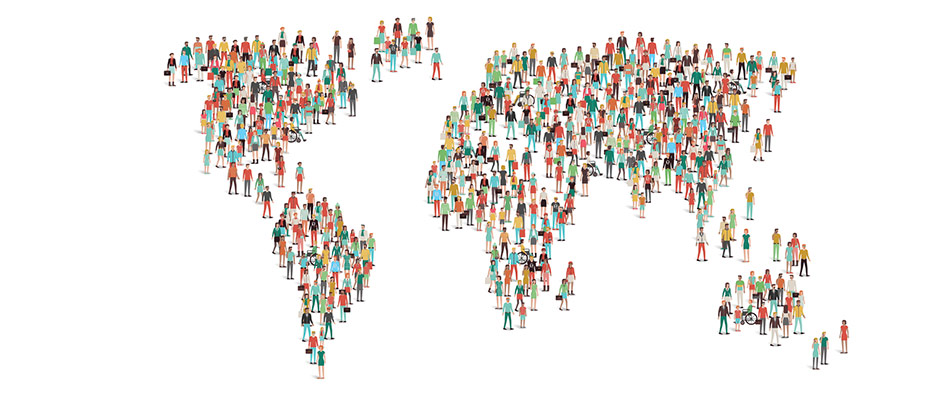Belief in world unity is not merely an abstract ideal; it is a profound conviction rooted in the Bahá’í Faith that urges humanity to transcend its divisions and embrace a collective identity. The Bahá’í teachings assert that the well-being of individuals, communities, and nations is inextricably linked to the unity of mankind. This article seeks to elucidate the multi-faceted nature of this doctrine, exploring its implications and how individuals can actively engage with and manifest these teachings in their daily lives.
The Essence of World Unity
At the core of Bahá’í teachings is the principle that humanity forms a single, interconnected entity. The vision articulated by Bahá’u’lláh, the founder of the Bahá’í Faith, promotes a world where distinctions based on nationality, race, or creed are rendered insignificant in the face of a shared humanity. This conceptual framework encourages adherents to view the world as a cohesive whole, thereby challenging the divisive narratives that often arise in sociopolitical contexts.
Historical Context and Development of Unity Principles
The origins of the Bahá’í teachings on unity can be traced back to the 19th century. During a time of immense upheaval and transformation, Bahá’u’lláh’s revelations offered a clarion call for unity amidst diversity. His writings emphasize the need for collaboration and mutual respect among the various peoples and cultures of the world. As such, understanding the historical context of these teachings enhances their relevance to contemporary society, where polarization continues to threaten global stability.
The Importance of Understanding and Acceptance
To genuinely embrace the tenets of world unity, one must cultivate an attitude of understanding and acceptance. This necessitates delving into the narratives of diverse cultures and recognizing the shared values that transcend individual differences. The Bahá’í teachings advocate for what can be termed as “comprehensive investigation of truth,” urging followers to seek knowledge beyond their immediate experiences. This fosters not only personal growth but also communal harmony, as acknowledgement of diverse perspectives enriches collective understanding.
Practical Steps Toward Engaging with Unity
Having established the theoretical basis of world unity, practical applications are paramount. Below are several actionable steps that individuals can undertake to embody these teachings:
- Community Building Initiatives: Begin by organizing community events that celebrate cultural diversity. Engaging with local organizations to host multicultural dialogues fosters the spirit of inclusivity.
- Education and Outreach: Advocate for educational programs that emphasize the importance of global citizenship and interfaith understanding. Utilize workshops, seminars, and dialogues as platforms for spreading awareness.
- Volunteerism: Actively participate in volunteer efforts that aim to alleviate social injustices. Collaboration with other faith groups or community organizations can further reinforce the ideals of unity in action.
Interpersonal Relationships and Unity
Unity begins at the interpersonal level. It entails cultivating relationships characterized by empathy and respect. The Bahá’í teachings impart that personal transformation is essential to effecting broader societal change. Engaging with others on a human level allows individuals to break down barriers and foster a deeper understanding of one another’s experiences and struggles. Listening actively and approaching discussions with an open mind are paramount virtues in this journey toward unity.
The Role of Dialogue in Promoting Unity
Dialogue is a powerful tool in the pursuit of world unity. Through sincere and constructive conversations, individuals can bridge divides and dismantle preconceived notions. The Bahá’í approach to conversation is rooted in mutual respect and the recognition of the inherent nobility of every individual. By advocating for civil discourse that prioritizes understanding over mere disagreement, one can create spaces where unity can flourish.
Global Perspectives on Unity
In examining unity from a global perspective, one must also consider its implications at the international level. Issues such as climate change, economic inequality, and humanitarian crises are often exacerbated by divisions among nations. The Bahá’í teachings assert that a unified effort is essential to address these challenges effectively. The establishment of international bodies and cooperative agreements can serve as mechanisms for exercising collective responsibility, thereby resonating with the ideal of global unity espoused within the faith.
The Role of Youth in Universal Unity
The youth are often catalysts for positive change. Empowering young individuals within the framework of Bahá’í teachings is crucial in promoting the narrative of world unity. By encouraging youth participation in leadership roles and community service, they can harness their innovative capabilities for the greater good. Equipping the younger generation with the tools to pursue unity fosters an enduring legacy of compassion, understanding, and collaboration.
Reflections on the Path Forward
As believers in world unity begin their journeys, it is essential to reflect on the core motivations driving this commitment. The principles of justice, equality, and compassion underscore the Bahá’í teachings, serving as foundational elements in the quest for a united world. Engaging with these principles and incorporating them into everyday life not only cultivates personal growth but also contributes to a more harmonious society. In embracing world unity, one acknowledges that every act of kindness contributes to the greater tapestry of humanity and reinforces the interconnectedness of all individuals.
In conclusion, the path to realizing the vision of world unity is a collective endeavor necessitating dedication, empathy, and action. The Bahá’í teachings provide a compelling framework for individuals who aspire to live in accordance with the ideal of a unified global community. Through education, dialogue, and personal transformation, a future characterized by unity may yet become a tangible reality.
